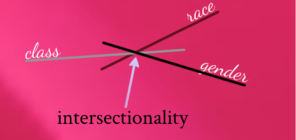Intersectionality at Work

Source: http://feministcurrent.com
by Chenoa Flippen
Immigration from Latin America to the United States has surged in recent decades, and along with it the entry of immigrant women into the U.S. labor market. Understanding how immigrant Latinas are faring in the U.S. economy requires more than just adding women to models that were designed to explain the experiences of immigrant men. Instead, this understanding requires us to move beyond treating gender, legal status, and family structure as mere variables to be controlled for and to think more deeply about how the various constraints on women’s work interact with one another.
Drawing on original data on immigrant women residing in Durham, NC, one of the “new” destinations that has sprung up around the country in recent decades, I explore the determinants of whether or not immigrant Latinas work, and if so, how well they are able to maintain steady, full time employment. Results show that immigrant Latinas are highly concentrated in a handful of immigrant-dominated occupations, and there is little evidence that women with greater education or work experience are able to get better jobs.
Family structure, particularly marriage and childbearing, poses a critical constraint on women’s work, though lacking legal authorization to work does not. However, considering the impact of family, legal status, and human capital separately presents a misleading picture of immigrant Latina’s work opportunities. While undocumented women are not less likely to work overall, they are more likely than their peers with legal status to be funneled into immigrant niches, particularly childcare, where wages are lower. They are also subject to substantially greater employment instability than their legal counterparts.
Likewise, documentation interacts with marital status such that married women are particularly less likely to work when undocumented. Thus part of what appears to be a patriarchal constraint on women’s work actually reflects structural constraints related to immigration policy and conditions in the low wage labor market.
Immigrant Latinas are among the most disadvantaged of all workers in the United States today. Gender and the associated difficulties in balancing work and family obligations are central to that disadvantage. But so too are our nation’s immigration laws, which consign large numbers of immigrant Latinas to perpetual marginality, undermining their position in the labor market and at home.
Chenoa A. Flippen is assistant professor of sociology at the University of Pennsylvania. Her article, “Intersectionality at Work: Determinants of Labor Supply Among Immigrant Latinas” is published in the June 2014 issue of Gender & Society. To view the article, click here.
Cross-posted at Gender & Society blog.